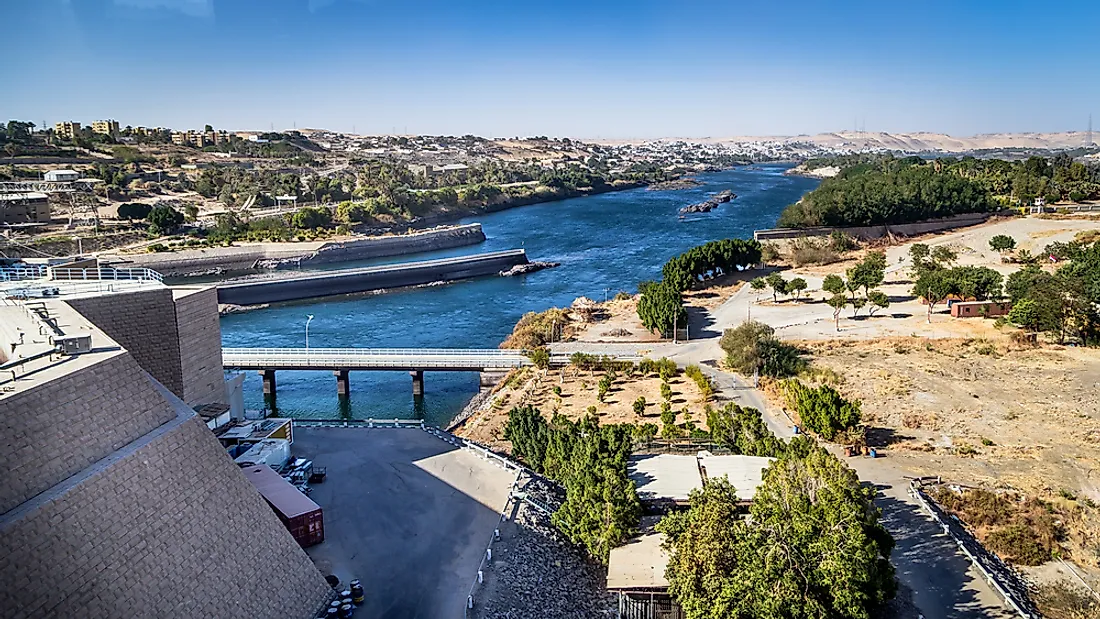The Aswan High Dam

The Aswan High Dam is an embankment dam that was constructed across the Nile in Egypt in the years between 1960 and 1976. The Aswan High Dam is 3,830 meters long, 980 meters wide at the base, 40 meters wide at the crest, and 111 meters tall. It contains 43,000,000 cubic meters of material.
History
Prior to the construction of the High Dam, the flooding of the Nile occurred on a yearly basis down the valley from its drainage basin of origin. As a result, the floods gave rise to high water that was rich in natural nutrients and minerals that were able to nourish the fertile soil along its plains. The Nile valley has been suitable for farming activities for a long time. As Egypt's population grew and technology increased, it was necessary to control the flooding to protect and support farming land and its economically significant cotton crop. The Aswan Low Dam had been completed at the beginning of the 20th century downstream. It was the success of the Aswan Low Dam when it was utilized maximally that prompted the building of the Aswan High Dam after the Egyptian Revolution in 1952.
Significance of the Aswan High Dam
The Aswan High Dam has the ability to better regulate flooding and droughts. The dam mitigated the effects emanating from floods with navigation along the Nile river both upstream and downstream of the dam being improved. In addition, a new fishing industry has been established around the dam causing the establishment of factories for the industry and packaging being set up in close proximity to Lake Nasser.
The dam also provides increased water storage for irrigation in surrounding areas and generates hydroelectricity. In this respect, the dam has proven to be of great importance to Egypt’s plans of industrialization. It has been established that the dam has had a notable effect on the culture and economy of the country.
The reservoir storage has been increased by construction of the High Aswan dam. The regulation of floods is made possible and the excess water could be stored to be released later over a number of years. As a result of the lack of reliable rainfall, Egypt’s agriculture is heavily dependent upon irrigation. It facilitates the growth of two crops per year which is beneficial and when the high dam at Aswan releases water, it is channeled into the irrigation canals.
The Aswan High Dam has led to an increase in agricultural production, electricity generation, employment opportunities, and enhancement of navigation that gives a boost to the tourism industry. However, in the event of all these vital aspects, the dam flooded a significantly large area resulting in the relocation of many people, coastline erosion, soil salinity, and health complications. In spite of these negative aspects, with a reservoir capacity of 132 cubic kilometers, the Aswan High Dam provides water for about 33,600 km of irrigation land and hence meets the irrigation needs of both Egypt and Sudan.











